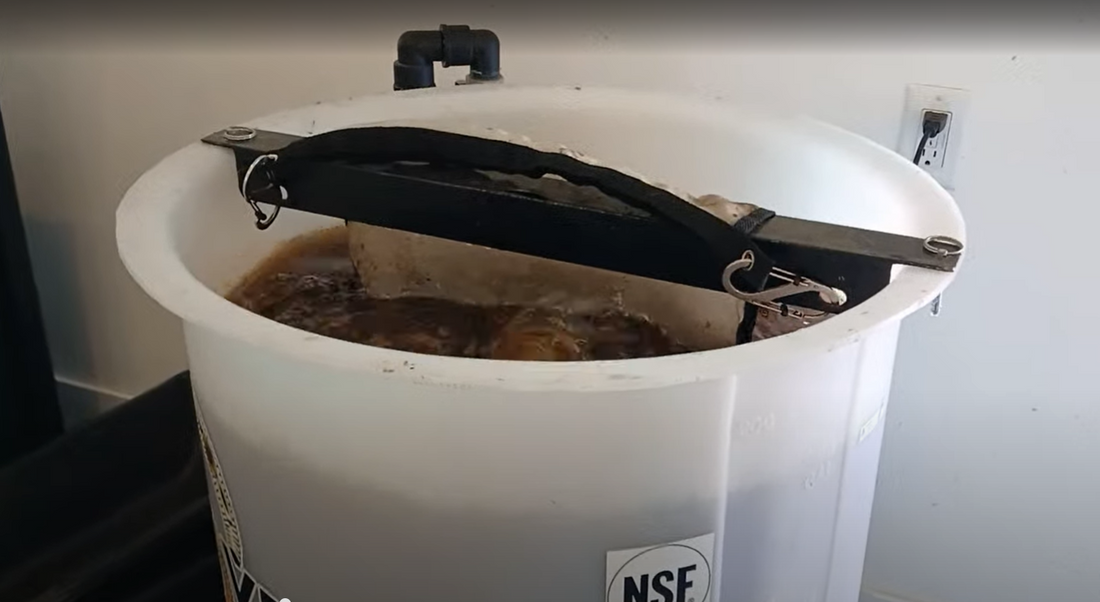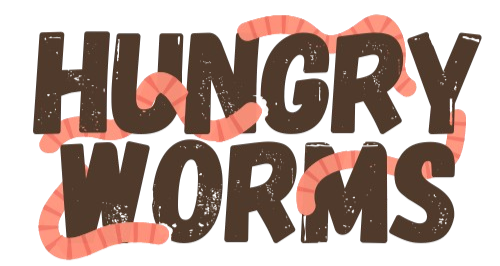
Worm Tea & Compost Tea Storage and Shelf Life
Share
- Compost tea is a microbiome that can be beneficial or detrimental to plant growth.
- It's shelf life is synonymous with the life-span of the beneficial organisms inside of it.
- The life-span of the organisms depends on several factors, such as at which point in the process it was bottled, at what temperature, and which foods were used to make the tea.
- Without a microscope, its impossible to know if the beneficial organisms are still present, and thus if it has past its shelf life or not.
Understanding Compost Tea: A Living Soup of Organisms
Compost Tea is a vast ocean of microbial life.
A tea can be beneficial or harmful depending on the microbial communities present in it.
The beneficial microorganisms are reliant on oxygen to live.
So, when you are asking for the "shelf life" of compost tea, you are really asking how long can the beneficial aerobic microorganisms remain active and present in the tea.
And I'll answer that question with another question; "What's the shelf life of composting worms?"
There's not a straightforward answer! It could be 1 hour, it could be months, all depending on how they are "stored".
For worms, you can simply look at them to see if they are still alive. But, with microorganisms you need a microscope. You wouldn't want to buy or sell worms without knowing if they are alive or not, and it should be the same with the organisms in a tea!
Without a microscope to verify the health of the microbial population in the tea at any point in its "storage," it should be used immediately after being cut off from oxygen.
Let's talk about why.
The Factors that Affect Shelf Life and Storage of Compost or Worm Tea
1) Oxygen Availability
There are are distinct phases in the microbial communities through the brewing process. Depending on what "phase" your tea is in when you store it (cutting it off from its oxygen source, such as bottling it) will affect its shelf life.
Phase 1: Bacterial and Fungal Population Bloom
The first organisms that will respond to an addition of foods in a tea brew are bacteria and fungi - but mostly bacteria. They are the organisms that consume the food source added. Their population will increase exponentially.. we're talking doubling every 20 minutes.
To give you an idea of how rapid this growth can be, at that rate one bacteria can become nearly 70 TRILLION in just 12 hours.
During this initial stage, the microbial community can be pretty volatile, and to say oxygen is being consumed rapidly is an understatement. If you added too much food to the tea, or if you're not providing enough oxygen, things can get anaerobic during this phase and turn your brew bad pretty easily.
If your tea is still aerobic it could be used during this phase, but you would not want to store it during this phase as the rapid microbial blooms would deplete any available oxygen and turn the tea bad.
Phase 2: Prey and Predator Cycles
In any healthy ecosystem, a food web exists. As the bacterial and fungal bloom begins to hit peak population, their microbial predators begin to catch up.
Protozoans, such as flagellates and amoeba, consume bacteria and sometimes fungi, and now have an abundance of prey to eat. They will experience a population explosion similar to the bacterial/fungal blooms in phase 1.
This results in a decimation of the bacteria/fungal population, and an increase in the available oxygen, as the tea becomes overwhelmed by these microbial predators.
Then, the predators will hit peak population. Having consumed much of the bacteria and fungi, their population has run out of food to sustain itself, and the protozoan population will begin to die off.
Then, with less predators present, the bacteria and fungi population will recover.
Shortly after, the predators will be right back on their tail.
Then, once again, the predators will grow a larger population than can be sustained on the current level of prey until it collapses and the bacteria and fungi recover, and so on.
This cycle continues until the tea is out of any available food for the bacteria and fungi to repopulate.

Of course, without a microscope it is impossible to know at what phase the tea is at, but while the predators are dominant and oxygen is most abundant (where the arrows point on the chart) it is safer to remove the tea from its oxygen source and store it as there are less bacterial/fungal blooms consuming oxygen.
Temperature
The closer the internal temperature in the tea is to 77°F, or 25°C, the quicker organisms will reproduce, consuming food and oxygen, and burn through any potential shelf life.
To maximize shelf life, keeping your tea close to 38-40° will keep the organisms alive, but growing slow enough so as to not deplete available oxygen.
Foods Used to Create the Tea
Some foods will be rapidly consumed, such as molasses (don't use molasses!), while other foods will be slowly utilized, such as humates and chitin.
The faster the food source can be consumed, the more volatile and rapid the population blooms will be. Volatility is not compatible with shelf-stability.
So for a more shelf stable tea, opt for food sources that won't decompose rapidly.
Importance of Testing or a Microscope
If you're making worm tea for science or business, you really should have some form of quality control for your tea.
This can be done by consistently testing the same recipe at the same temperature, same food source and amount, same amount of water and water quality, oxygen levels, and same source material and amount on plants and making sure they have a positive response.
You can get a microbial soil test, or, learn soil microscopy yourself! With a microscope there is no guess work. Just like you can look in a worm bin to check on the health of the worms inside, you can use the microscope to take a peek in the tea to check on the health of the microorganisms inside.
You can also learn more about compost and worm tea in this video!
